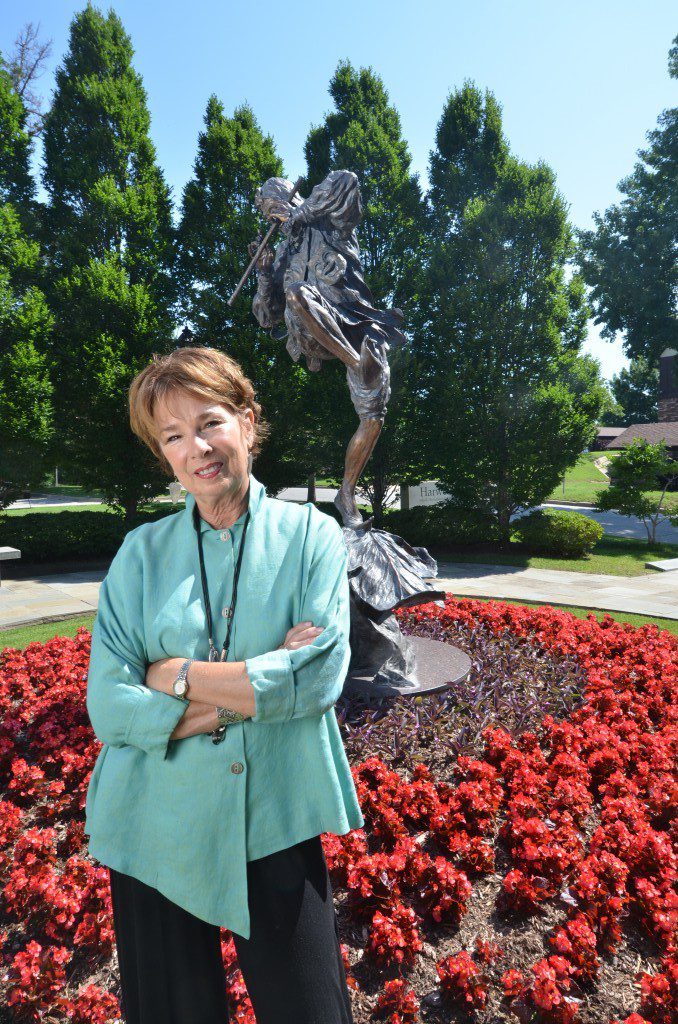
Most Tulsa residents have seen a sculpture by Rosalind Cook, an artist with more than 30 public works in the city who will be inducted into the Tulsa Hall of Fame in October. Her bronze sculptures line Riverside Park and Utica Square and are features at Woodward Park, the Peggy V. Helmerich Library and Saint Francis Hospital, among other places.
Capturing the Spirit in Bronze, a book penned by Cook is scheduled for release this month. The book, she says, is a “thank you” to the people of Tulsa who have made her public sculptures possible.
The book “documents many of the stories behind the commissioning and creating of these sculptures,” says Cook. “Raising a family and building a career in Tulsa has been an amazing adventure.”[pullquote]“God has truly blessed my career with success, and I saw an opportunity to perhaps be a catalyst for budding artists,”[/pullquote]
As she transitions into retirement, Cook wants to encourage Tulsans to use their gifts to benefit others, which she says is one purpose of her book.
“God has truly blessed my career with success, and I saw an opportunity to perhaps be a catalyst for budding artists,” Cook says.
She also recently created a foundation for Tulsa’s art teachers and art projects.
A beneficiary of her foundation, Booker T. Washington High School art teacher Jennifer Dix Brown, received one of the 2013 Rosalind Cook Encouragement Awards, making possible a mixed media show at the Hardesty Arts Center featuring work by Dix’s students. Awards have also gone to TRACE Academy for art supplies and to Jenks High School for photographic equipment.
Cook majored in special education in college, a choice that she says shaped her career as a sculptor.
“There was a great emphasis in working with the younger students on shape, form and texture,” Cook says of her training with visually impaired and blind students. “Often, my eyes were covered as we explored everything from toys to food and insides of buildings. This developed in me a keen sense of form and texture, which has added greatly to my skill when I finally did move into sculpture.”
Sculpting as a practice came later to Cook, who first explored painting and more manageable forms of art while she and her husband, Hal, raised three children.
“In our early marriage,” Cook says, “I had many garage sales and would become so flattered at selling my oils that I would pull the paintings off of our apartment wall, and [I]even sold one of Hal’s favorites, which he still misses today.”
Many of Cook’s sculptures depict children at play, but others bear a somber tone. While working on a sculpture for World Vision near Tacoma, Wash., the Alfred P. Murrah Federal Building was bombed. Her sculpture of Jesus holding out bread to the children of the world was shaped by that horrific event.
“I was sculpting the children for the monument in my studio as the rescuers were finding bodies of the victims,” says Cook. “My heart was heavy with grief. This grief was my new motivation to capture life in the faces and movements of the children I was working on in clay.”
The experience of making this sculpture taught Cook how to capture the spirit of her subjects in bronze.
Capturing the Spirit in Bronze is available for sale on Cook’s website, www.rosalindcook.com, and she will hold several book signings in Tulsa in September.






















